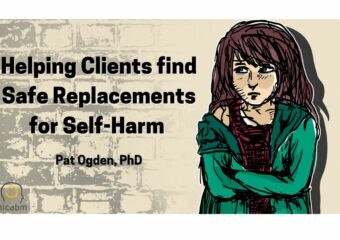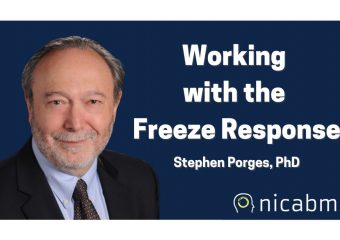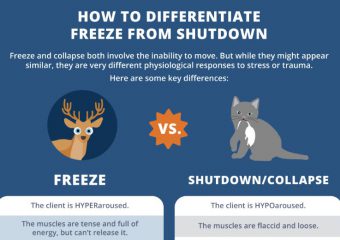It used to be that when working with trauma, so much of our focus centered on helping clients process their traumatic experience. But over the past several years, we’ve gained a better understanding that that’s just one piece of the work – and perhaps now more than ever, we understand that multiple approaches are often […]
Working with Self-Harm: Pat Ogden, PhD with a Safe Replacement for Harmful Actions
In the aftermath of trauma, some clients turn to self-harm to relieve intense feelings of shame, anxiety, or even emotional numbness. Over time, these harmful behaviors can become addictive – and helping clients break that cycle can be a challenging process. So in the video below, Pat Ogden, PhD explains how she helps clients gain […]
Working with the Freeze Response in the Treatment of Trauma with Stephen Porges, PhD
When a client freezes during a session, how do you help them come out of their trauma response (without further triggering them)? This can be challenging because proximity, movement, and eye contact can all feel threatening to a client who is frozen and hyper-aware of danger. So in the video below, Stephen Porges, PhD, shares […]
[Infographic] How to Differentiate Between the Freeze and Shutdown Trauma Responses
The freeze and shutdown responses to trauma can resemble each other . . . . . . but they are very different in terms of what’s happening in your client’s brain, body, and nervous system. And that means they require different grounding strategies as well. In this infographic, we lay out some key cues to […]
COVID-19 Frontliners and Moral Injury
The COVID-19 pandemic has put immense strain on healthcare workers around the world. They’ve had to make impossible decisions, work in unsafe conditions, and often still feel like they didn’t do enough to help. For some frontliners, they will emerge from the pandemic with moral injuries similar to what we see in soldiers who’ve been […]




